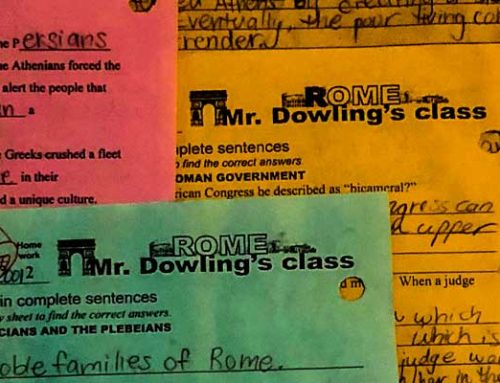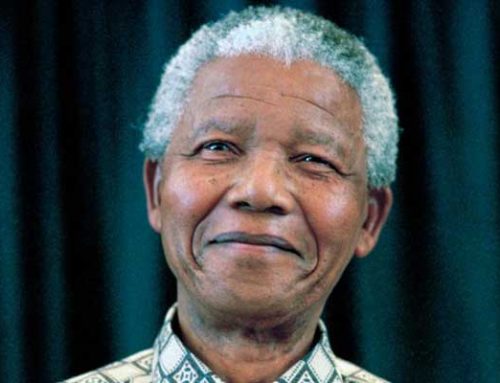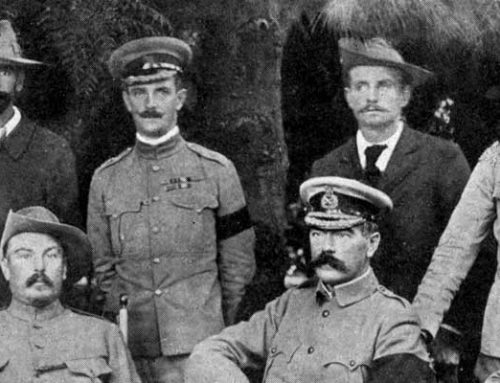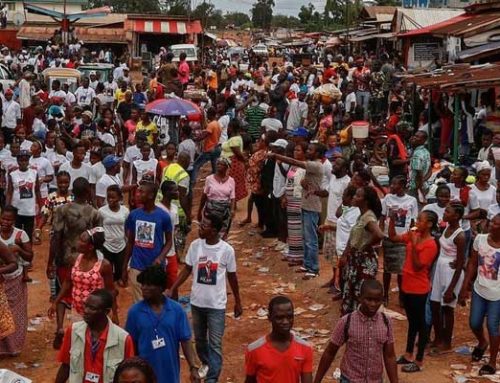The British granted South Africa independence in 1910 but gave power only to white people. In 1948, South Africa’s National Party gained office in an election where only white people could vote. The party began a policy of racial segregation known as apartheid, which means “apartness.”
The Population Registration Act classified the people as Bantu (black Africans), coloured (people of mixed race), white (the descendants of the Boers and the British), and Asian (Indian and Pakistani immigrants).
The Group Areas Act established separate sections for each race. Members of other races were forbidden to live, work, or own land in areas belonging to other races. Pass Laws required non-whites to carry a “pass” to prove they had permission to travel in white areas.
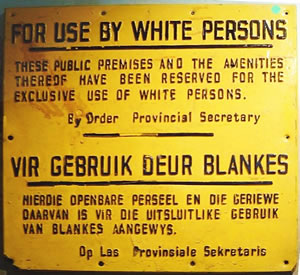
Apartheid_sign
Apartheid was a system of racial segregation in South Africa enforced by white minority governments from 1948 to 1994. The South African government curtailed the rights, associations and movements of the majority black inhabitants, and Afrikaner minority rule was maintained.
The Bantu Homelands Citizenship Act created several small “nations” within South Africa for black South Africans. All black South Africans, regardless of where they lived, were made citizens of the homelands and thus were excluded from participating in the governing of South Africa.
Other South African laws forbade most social contact between races, authorized segregated public facilities, established separate school
systems with lower standards for non-whites and restricted each race to specific jobs.
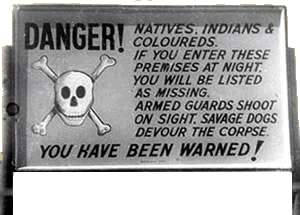
Apartheid_sign2
More than eighty percent of South Africa’s land was set aside for its white residents, despite comprising less than ten percent of the population. South Africa’s black majority had resisted apartheid for many years. They began rioting in 1976 when the South African government tried to force black children in the Soweto township to learn Afrikaans, one of the languages of the white minority. The rioting continued for fourteen years until the apartheid laws were repealed.
The world community made South Africa a pariah because of its racial policies. The nation was forced to leave the Commonwealth, an alliance of former British colonies, in 1961. In 1985, both the United Kingdom and the United States imposed restrictions on trade.
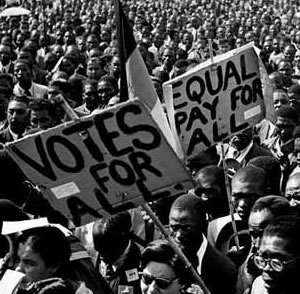
Apartheid_protest
White South Africans yielded to world pressure and domestic violence in 1990 by repealing most of the apartheid laws.
White South Africans yielded to world pressure and domestic violence in 1990 by repealing most of the apartheid laws. Three years later, a new constitution gave people of all races the right to vote. The following year South Africans elected Nelson Mandela, a black man imprisoned for twenty-seven years for opposing apartheid.
Resources
Download this lesson as Microsoft Word file or as an Adobe Acrobat file.
Mr. Donn has an excellent website that includes a section on African History.
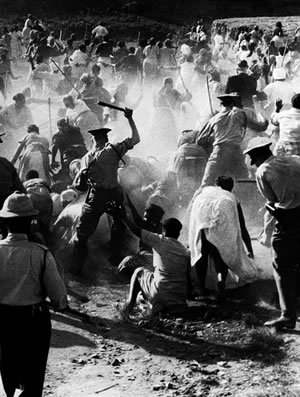
Apartheid_violence
South Africa’s black majority began rioting in 1976 when the government tried to force black children in the Soweto township to learn Afrikaans, one of the languages of the white minority. The rioting continued for the next fourteen years until the South African government repealed the apartheid laws.

